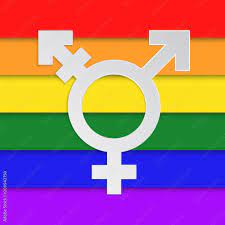When it comes to hormones, understanding their roles can feel like stepping into a maze of science and biology. For many, the terms "estradiol" and "testosterone" might ring a bell, but what do they really mean? In this article, we’ll delve into the world of these two crucial hormones, exploring how they shape the health and well-being of both females and males. So, let’s break it down and see how female is to estradiol as male is to testosterone.
Understanding Hormones: The Basics of Estradiol
Estradiol is one of the primary forms of estrogen, a hormone that plays a critical role in female reproductive health. Produced mainly in the ovaries, estradiol is vital for the regulation of the menstrual cycle and is involved in the development of female secondary sexual characteristics like breast development and fat distribution. It’s a powerhouse hormone that influences a wide range of bodily functions, including bone density and mood stability.Post Op Transgender Female
Besides its reproductive functions, estradiol also has significant effects on other systems in the body. For instance, it helps maintain cardiovascular health and cognitive function. When estradiol levels are balanced, women generally experience better overall health. However, fluctuations or deficiencies can lead to various health issues, making it essential to understand how this hormone operates within the body.
What Does Estradiol Do for Females?
Estradiol is instrumental in orchestrating multiple processes in a female’s body. During puberty, it triggers the development of breasts and the start of menstruation, and it continues to play a role throughout a woman’s reproductive years. Additionally, estradiol aids in regulating the menstrual cycle, ensuring that ovulation occurs regularly and that the body is prepared for potential pregnancy.
Furthermore, estradiol has a direct impact on mood and mental well-being. Many women report mood swings and emotional fluctuations that coincide with changes in estradiol levels, particularly during the menstrual cycle or menopause. Understanding these connections can help women navigate their health and manage symptoms more effectively.
Meet Testosterone: The Male Hormone Equivalent
While estradiol is essential for females, testosterone serves as the primary male hormone. Produced mainly in the testes, testosterone is responsible for the development of male characteristics, such as increased muscle mass, body hair, and the deepening of the voice. This hormone peaks during adolescence and early adulthood, significantly impacting physical performance and libido.
Testosterone also plays a crucial role in regulating mood and energy levels. It’s not just about physical traits; this hormone affects how males feel and behave. A healthy level of testosterone is linked to a sense of well-being, assertiveness, and competitiveness, making it a key player in male health and identity.
How Testosterone Shapes Male Physique and Mood
Testosterone is often hailed as the hormone that shapes the male physique. Increased levels of testosterone lead to greater muscle growth, improved strength, and enhanced athletic performance. Additionally, it assists in the distribution of body fat, typically resulting in a more muscular, leaner appearance, which is often culturally associated with masculinity.
But testosterone isn’t just about muscles and physical traits; it also heavily influences mood. Low testosterone levels can lead to fatigue, depression, and irritability, while balanced levels can contribute to confidence and motivation. Understanding the psychological aspects of testosterone can help men maintain a balanced lifestyle and foster mental health.
Estradiol vs. Testosterone: Key Differences Explained
While estradiol and testosterone are both critical hormones, they serve vastly different functions in the body. Estradiol is primarily linked to female reproductive health and secondary sexual characteristics, whereas testosterone is integral to male physical traits and reproductive functions. The balance of these hormones is crucial, as too much or too little of either can lead to health complications.
Additionally, the production and regulation of these hormones differ by gender. Females have a cyclical production of estradiol, influenced by their menstrual cycle, while testosterone levels in males tend to remain more stable but can fluctuate due to factors like age, stress, and overall health. This distinction is vital in understanding how hormonal health varies between genders.
The Role of Hormones in Male and Female Health
Hormones like estradiol and testosterone are fundamental to maintaining health in both males and females. They regulate various bodily functions, including metabolism, mood, and sexual health. For females, maintaining optimal levels of estradiol is essential for reproductive health and bone strength, while males rely on testosterone for muscle mass, energy, and libido.
Moreover, these hormones play a role in chronic conditions. For instance, low testosterone in men is linked to obesity and cardiovascular disease, while imbalances in estradiol can contribute to osteoporosis and certain cancers in women. Recognizing the importance of these hormones can lead to better health management and preventative care strategies.
How Hormonal Imbalances Affect Both Genders
Hormonal imbalances can wreak havoc on health, affecting both genders in unique ways. In women, low levels of estradiol can lead to symptoms like hot flashes, mood swings, and vaginal dryness, particularly during menopause. On the other hand, excess estradiol can increase the risk of certain cancers, including breast cancer.
For men, low testosterone levels can cause fatigue, reduced sexual desire, and even mood disorders. Conversely, high testosterone levels may lead to aggression and other health issues. Understanding these imbalances and their effects on both genders helps in promoting awareness and encouraging individuals to seek help when necessary.
Embracing Hormonal Health: Tips for Everyone
Taking charge of hormonal health involves several lifestyle choices that can benefit individuals of all genders. Regular exercise, a balanced diet rich in whole foods, and adequate sleep are foundational steps in maintaining hormone levels. Incorporating stress management techniques, such as mindfulness or yoga, can also help regulate hormonal balance.
Additionally, routine check-ups with healthcare providers can help monitor hormone levels and identify potential imbalances early on. For both men and women, being proactive about hormonal health can lead to improved overall well-being, ensuring that both estradiol and testosterone levels remain within healthy ranges.
In summary, understanding the roles of estradiol and testosterone provides valuable insights into the health and well-being of both females and males. While these hormones serve different functions, they are equally important in maintaining balance within the body. By recognizing the significance of hormonal health and embracing strategies to support it, individuals can foster a healthier, happier life. So let’s keep this conversation going and prioritize our hormonal well-being!


